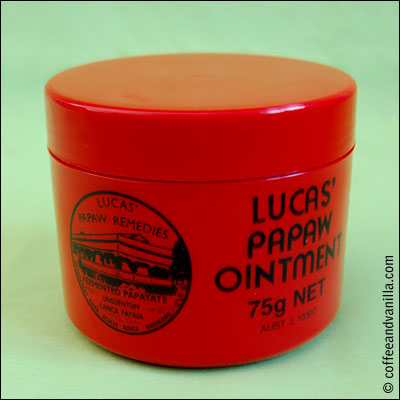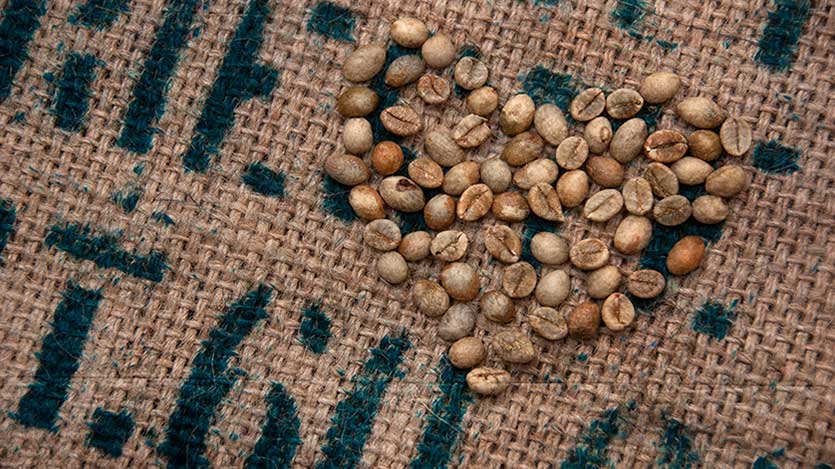
A while back, when my second daughter was born, my lovely friend Nora has sent me baby gift including Lucas’ Papaw Ointment – thank You!!! We used it all the time and we loved it so much that when it was finished I searched the whole London… just to finally find it in Australia Shop while visiting Condesa in Covent Garden that is just on opposite side of Maiden Lane.
Lucas’s Papaw Ointment (£6.95 – 25g tube / £13.95 – 75g tub) is not only very effective nappy rash cream, it has also much nicer consistency and scent than other baby creams. But there is much more to it, this papaya cream works miracles on all kind of skin problems including gravel rash (when you crash on the bike), cuts, insect bites, burns, eczemas, dry skin (especially on elbows and heels) or even plain spots thanks to it’s antibacterial and antimicrobial properties.
Lucas’ Papaw Remedies is a company started by Dr. Thomas Pennington Lucas in Brisbane, Australia where they are still located, family owned and producing ointment by the team of only 12 people from the same formula that was created 100 years ago: only from fresh fermented papaya fruit and petroleum jelly, free from harsh preservatives such as MIT.
No wonder that this magic cream is so hard to find and sometimes you have to even sign up on a waiting list to get it in previously mentioned London’s shop (!)
DISCLOSURE: I purchased Lucas’ Papaw Ointment in Australia Shop on my own wish. I was not financially compensated for this post by neither of the named companies. All opinions are my own.

Can you please tell me if any of the following are included in the papaw ointment:
Alternative names: 2-Methyl-4-isothiazolin-3-one, 5-Chloro-2-methyl-4-isothiazolin-3-one, Acticide, Algucid, Amerstat 250, Benzisothiazolinone (BIT), Caswell # 572A, Euxyl K 100, Fennosan IT 21, Grotan, Grotan TK2, Isothiazolinone (Kathon), Kathon CG, Kordek, Methylchloroisothiazolinone (MCI), Methylisothiazolinone (MIT or MI), Mergal K7, Metatin GT, Mitco CC 32 L, Microcare, Neolone, Optiphen MIT, OriStar MIT, ProClin, SPX, Zonen MT
I have an allergic reaction and have been using this to sooth my allergy
Hi Sue, no it does not have any form of MI. The ointment is made mostly from fresh fermented papaya fruit. The only preservative is potassium sorbate, it has also petroleum and wax as a base and gum blasam peru for fragrance. Hope it helps.
Margot, I appreciate that this cream has been great for you,
but here is just a general alert for your readers who, like us, tend to be sensitive to certain ingredients and foods —
According to what appear to be very credible sources (I’ll quote from them below),
Balsam of Peru, which is in the Lucas’ Pawpaw Ointment, causes an allergic in 3.8% of the population (1 in 26 people), is one of the “top five allergens” that cause positive allergy patch test results, is involved in 50% of the cases where people are discovered to have a fragrance allergy, and exposure to Balsam of Peru can actually encourage the body to become cross-sensitized to a wide variety of other chemical ingredients that are in everyday products (so it might be safest not to expose children to it).
“A positive result to Balsam of Peru is seen in 50% of fragrance allergy cases.
Positive patch test also indicates that the individual may have problems with flavourings (both artificial and natural), some medications and other perfumed products. […]
Allergy to Balsam of Peru may make you sensitive to other chemically related substances. Many of these are spices and flavourings that are used in daily cooking.
As a precaution you should avoid using these products, as it is likely that you will be allergic to them too.”
https://www.dermnetnz.org/topics/balsam-of-peru-allergy/
“It can cause allergic reactions, with numerous large surveys identifying it as being in the “top five” allergens most commonly causing patch test reactions.
It may cause inflammation, redness, swelling, soreness, itching, and blisters, including allergic contact dermatitis, stomatitis (inflammation and soreness of the mouth or tongue), cheilitis (inflammation, rash, or painful erosion of the lips, oropharyngeal mucosa, or angles of their mouth), pruritus, hand eczema, generalized or resistant plantar dermatitis, rhinitis, and conjunctivitis. […]
A study in 2001 found that 3.8% of the general population patch tested was allergic to it.
Many flavorings and perfumes contain components identical to Balsam of Peru. […]
Because of allergic reactions, since 1982 crude Balsam of Peru has been banned by the International Fragrance Association from use as a fragrance compound, but extracts and distillates are used up to a maximum level of 0.4% in products, and are not covered by mandatory labeling.
In March 2006, the European Commission, Health and Consumer Protection Directorate-General, Scientific Committee on Consumer Products, issued an Opinion on Peru Balsam. It confirmed that crude Peru Balsam should not be used as a fragrance ingredient, because of a wide variety of test results on its sensitizing potential, but that extracts and distillates can be used up to a maximum level of 0.4% in products.”
https://en.wikipedia.org/wiki/Balsam_of_Peru